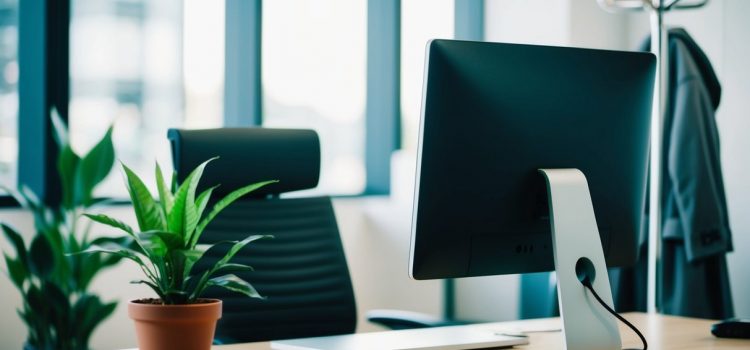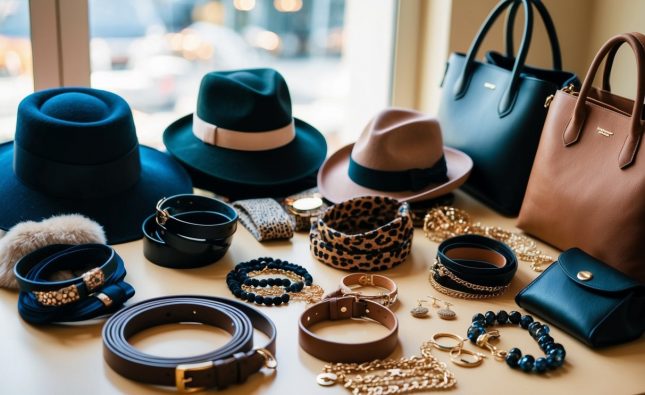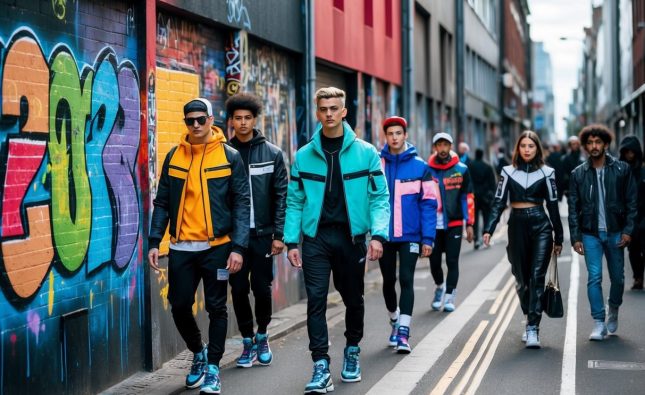
Choosing a business casual outfit can be a challenge when wanting to blend professionalism with comfort. The key to mastering this dress code lies in selecting versatile pieces that can be mixed and matched effortlessly. By understanding the essential elements of business casual attire, individuals can create looks that are both stylish and appropriate for a variety of workplace settings.

For men, classic chinos paired with a tailored shirt or a smart polo offer a polished yet relaxed look. Women may opt for tailored trousers or a knee-length skirt combined with a sophisticated blouse. Accessories like blazers and dress shoes can elevate any outfit, making a strong impression without compromising comfort.
Finding the right balance between formal and casual is crucial. With the right outfit choices, individuals can confidently navigate their workday while reflecting their personal style.
Defining Business Casual
Business casual is a dress code that bridges the gap between formal business attire and more relaxed clothing styles. It allows for personal expression while maintaining a professional appearance, making it an essential aspect of many workplace environments.
Origins and Evolution of Business Casual
The concept of business casual emerged in the late 20th century. Originally, it aimed to create a more relaxed workplace atmosphere while still retaining professionalism. As companies began to adopt flexible dress codes, business casual transformed from strictly formal attire to include items like polo shirts, slacks, and blouses.
By the 1990s, tech firms popularized this style, particularly in Silicon Valley. Employees shifted to comfortable clothing, which reflected changes in company culture. Contemporary interpretations vary significantly, influenced by regional norms and industry standards.
Business Casual in Various Industries
Different industries interpret business casual uniquely. In tech and creative fields, it often means jeans and casual shoes paired with smart tops. Employees prioritize comfort and personal style while ensuring they look polished.
Conversely, in finance and law, business casual remains more conservative. Attire may include dress pants or skirts, tailored blouses, and blazers, avoiding overly casual items. Regardless of the setting, maintaining a neat and professional appearance is essential to fit the business environment.
Essential Pieces for a Business Casual Wardrobe
Creating a business casual wardrobe requires attention to specific clothing items that balance professionalism and comfort. Key elements include structured outerwear, versatile shirts, tailored trousers, and suitable shoes. Each piece contributes to an overall polished look while allowing for personal expression.
Blazers and Sports Coats
A well-fitted blazer or sports coat is central to a business casual ensemble. These garments instantly elevate any outfit, adding a touch of sophistication. Opt for fabrics like cotton or wool blends that allow for breathability.
Colors such as navy, gray, or muted tones work well for versatility.
- Fit: Tailored fit is essential; it should contour the shoulders and torso without being restrictive.
- Style: Look for single-breasted designs for a more modern appearance.
Remember to consider the occasion when choosing patterns or textures, as subtle checks or herringbones can add interest without being overpowering.
Dress Shirts and Polos
Dress shirts and polos are foundational pieces in a business casual wardrobe. These tops should be clean and crisp, fitting well without excessive looseness.
- Dress Shirts: Choose solid colors or subtle patterns. Fabrics like cotton or a cotton blend offer comfort. A button-down collar can enhance the formal aspect while remaining relaxed.
- Polos: Essential for a laid-back approach, polos should be high-quality and well-fitted. Stick to classic colors like white, navy, or pastel shades.
Layering with a sweater or a blazer enhances versatility, adapting the look for different settings throughout the week.
Slacks and Chinos
Trousers play a crucial role in achieving a business casual look. Slacks and chinos provide comfort while maintaining a polished appearance.
- Slacks: Tailored dress slacks in neutral colors such as black, gray, or khaki are essential. Fabrics should be lightweight for comfort.
- Chinos: A great alternative, chinos can be dressed up or down. Look for a good fit at the waist and tapered legs for a modern silhouette.
Pair these with dress shirts for meetings or polos for a more relaxed affair. Avoid excessive embellishments to keep them appropriate for business settings.
Appropriate Footwear Options
Footwear completes a business casual outfit, and the right choice is key for comfort and style.
- Dress Shoes: Leather shoes, such as oxfords or derbies, are timeless and elevate any outfit. Select shades that complement the overall color scheme.
- Loafers: These are a versatile option, providing a blend of comfort and sophistication.
- Smart Sneakers: Clean, minimal sneakers in leather or high-quality canvas can work if they remain understated.
Ensure that footwear is polished and in good condition to maintain a professional appearance. Avoid overly casual styles like flip-flops or heavily worn shoes.
Styling Tips for Business Casual Outfits

Achieving a polished look in business casual attire involves careful consideration of texture, color, and the ability to transition from day to night. Effective styling can elevate an outfit, making it suitable for various professional settings.
Mixing Textures and Patterns
Incorporating different textures keeps business casual outfits fresh and visually interesting. Combining materials like cotton, wool, and linen can create depth. For example, pairing a linen blazer with a knitted sweater adds dimension.
When it comes to patterns, subtlety is key. Stripes, checks, and small prints are suitable. A pinstriped shirt can pair well with solid-colored trousers. Layering patterns should be balanced; for example, mixing a checkered blouse with a plain skirt is effective, as long as one pattern remains understated.
Color Coordination
Color plays a significant role in conveying professionalism and style. Neutral tones like gray, navy, and beige are foundational. They can be complemented with bolder colors through accessories or layering pieces.
Using a color wheel helps in selecting complementary shades. For instance, pairing a navy blazer with a light pastel blouse creates a harmonious look. Accessories like ties or scarves can introduce splashes of color without overwhelming the outfit. Sticking to a palette of three main colors can streamline choices while ensuring versatility.
Outfit Transition From Office to Evening
To make an office outfit suitable for evening events, focus on key elements that can be easily transformed. Start with a simple base; fitted trousers and a classic top allow for seamless transitions.
Adding accessories like tailored jackets or statement jewelry can shift the vibe effortlessly. For instance, swapping flats for heels instantly elevates the ensemble. A structured bag can replace a tote, enhancing the overall aesthetic.
Finally, consider makeup and hair changes that are quick yet effective. A bold lipstick or an updo can refine a day look into something more polished for evening engagements.












